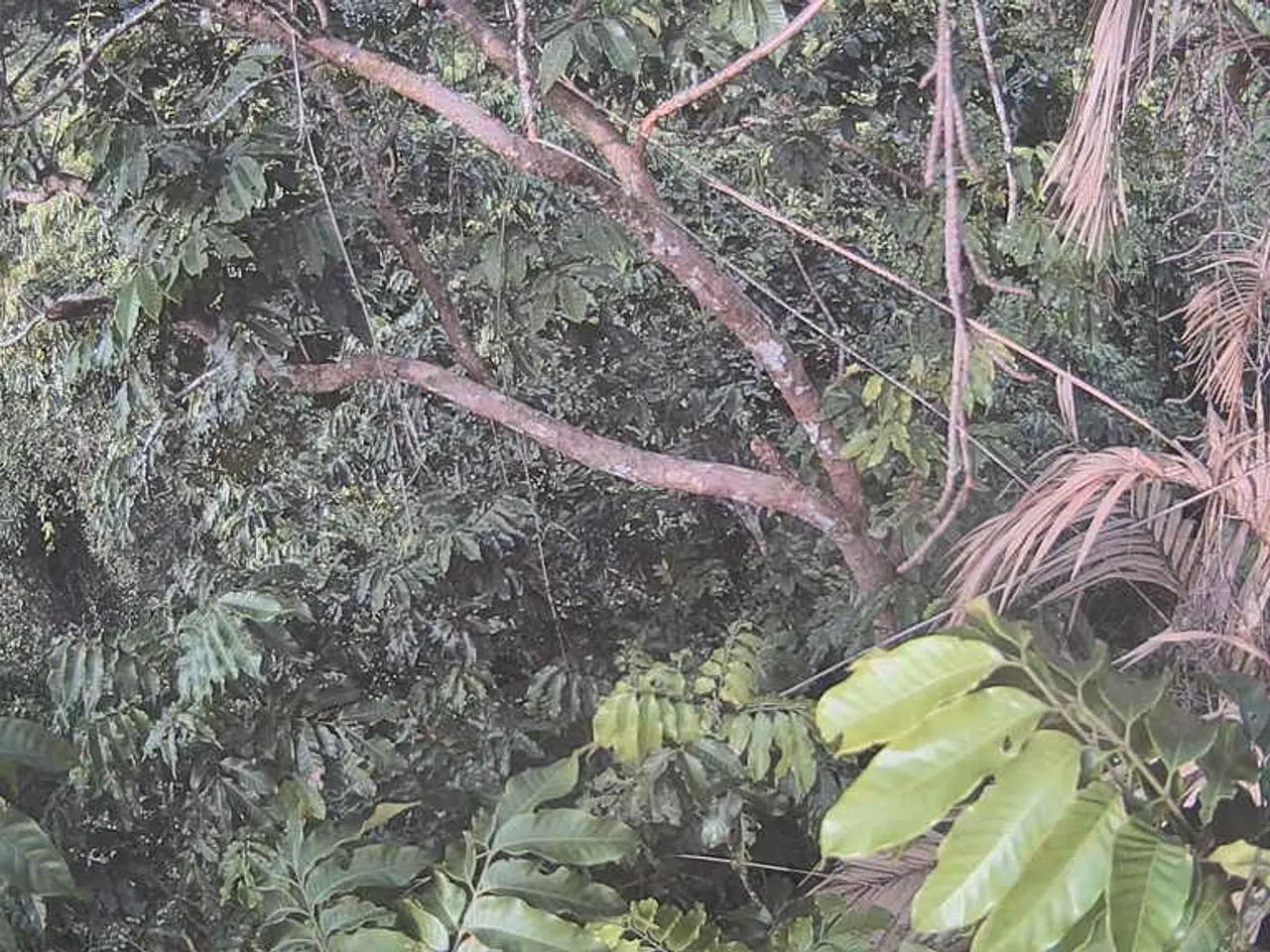Exploring Palm Conservation in Hawaii with the Hawaii Island Palm Society: A Journey into Tropical Garden Preservation
In an exciting new development, the International Palm Society and Hawaii Island Palm Society are embarking on an expedition to study palms in the Peruvian Amazon and the Andes. This journey aims to expand our understanding of these fascinating plants, which range from equatorial rainforests to high mountains like the Andean wax palms at 13,000 feet above sea level.
The study will focus on several common palm species, some of which have found a home in Hawaii. For instance, the Coconut Palm (Cocos nucifera) is a tropical palm tree famous for producing coconuts and is a popular tree in Hawaii for landscape purposes, food, and shelter. The Date Palm (Phoenix dactylifera), although mainly cultivated in the Middle East and parts of Africa, can also be found in subtropical climates like Hawaii.
Other palm species common in Hawaii include the Rhapis excelsa (Lady Palm), known for its popularity in interior and garden landscaping, and Livistona species, which are tall, evergreen palms used ornamentally and for food. Although not native to Hawaii, these palms thrive in its warm, humid climate, varying in their shade tolerance, growth rate, and reproductive characteristics.
Hawaii is also home to native palms like the Pritchardia genus, which consists of fan palms adapted to Hawaiian ecosystems. However, these endemic loulu palms (Pritchardia species) are particularly vulnerable to lethal yellowing disease, a threat that could devastate the island's palms if introduced.
To prevent such disasters, it is crucial to maintain the health of Hawaii's palms. This involves regular fertilisation, irrigation, and adherence to rules preventing the introduction of harmful insects and diseases. For example, the coconut rhinoceros beetle, an attractive insect tempting to some insect collectors, poses a risk of spreading to other palm species.
The expedition is part of a broader program to educate, protect, and promote the use of palms in tropical, subtropical, and warm temperate regions. It is a reminder of the importance of understanding and preserving these diverse and valuable plants.
In February 2026, the International Palm Society will be hosting a major conference in Vietnam and Thailand, furthering the global efforts to understand and protect these fascinating plants. For those interested in learning more about palms in Hawaii, resources such as the Hawaii Island Palm Society's website (HawaiiIslandPalmSociety.com) and private gardens in West Hawaii, like Dean Ouer's garden in Kaloko mauka, Kona Cloud Forest Sanctuary, and Donald Sanders' private garden in Holualoa, offer insightful experiences.
[1] University of Hawaii College of Tropical Agriculture and Human Resources. (n.d.). Palms of Hawaii. Retrieved from https://www.ctahr.hawaii.edu/uh/bureaus/cooperative/extension/horticulture/palms/
[2] National Tropical Botanical Garden. (n.d.). Rhapis excelsa. Retrieved from https://ntbg.org/plants/rhapis-excelsa/
[3] National Tropical Botanical Garden. (n.d.). Livistona spp. Retrieved from https://ntbg.org/plants/livistona-spp/
- The expedition to study palms in the Peruvian Amazon and the Andes is part of an initiative to expand knowledge in environmental-science, particularly in the field of palm botany.
- For those pursuing education-and-self-development, online-education resources like the University of Hawaii's Palms of Hawaii program (https://www.ctahr.hawaii.edu/uh/bureaus/cooperative/extension/horticulture/palms/) can provide valuable insights into tropical-palm species.
- As the study of palms extends beyond the Amazon to various tropical, subtropical, and warm-temperate regions, lifestyle choices can integrate home-and-garden practices that promote the growth of palm species that thrive in such environments.
- The Royal Palm (Rapia farinifera), a popular palm used in urban landscape design, has worldwide appeal not just for its aesthetic benefits, but also for its potential as a food source, making it an interesting subject for further research and learning in the field of science.




